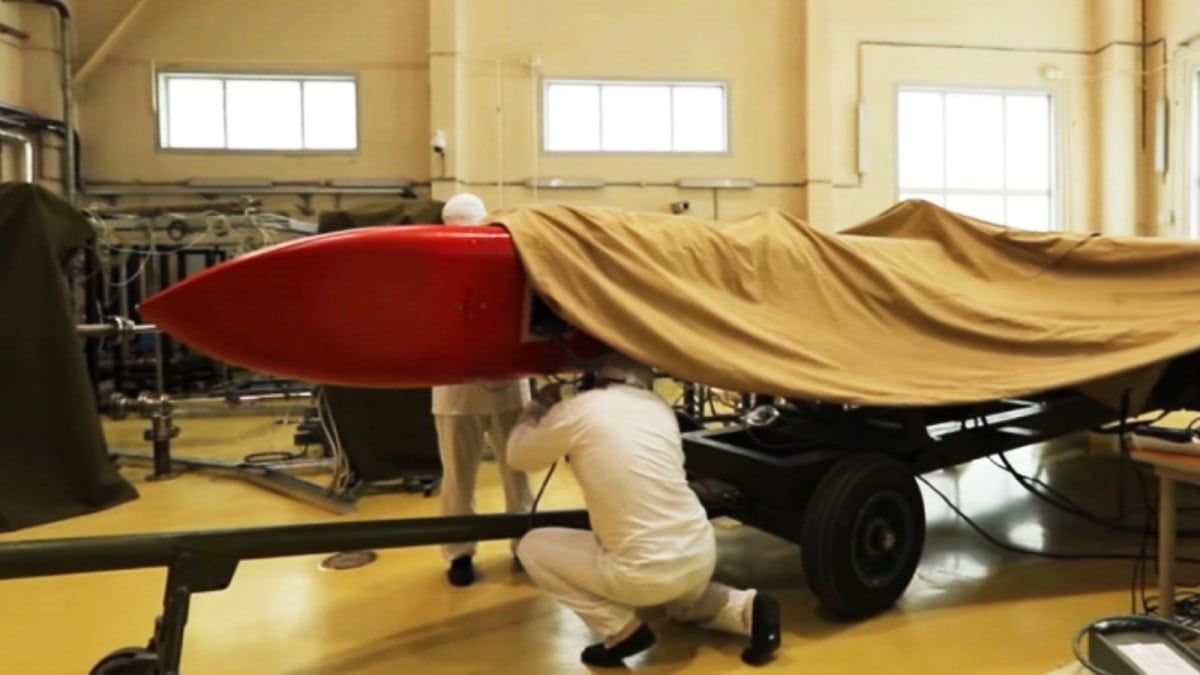Russia Fires World’s 1st Nuke-Powered Cruise Missile, Burevestnik; Putin Calls It A Weapon “No One Else Possesses”

On Sunday, Russian President Vladimir Putin declared the successful completion of the final test for the Burevestnik, a nuclear-powered cruise missile with a range of up to 14,000 kilometers (8,700 miles).
“The decisive tests are now complete,” Putin stated in a Kremlin-released video during a meeting with military officials.
Describing the Burevestnik as a “unique creation that no one else in the world possesses,” Putin highlighted its “unlimited range.”
He directed the military to prepare “infrastructure to put this weapon into service in the Russian armed forces.
“Valery Gerasimov, Russia’s military chief of staff, reported that during its latest test on October 21, the missile flew for “about 15 hours” over 14,000 km, noting this was not its maximum range.
“The technical characteristics of the Burevestnik allow it to be used with guaranteed precision against highly protected sites located at any distance,” Gerasimov added. The development of the Burevestnik was first announced by Putin in 2018.
The 9M730 Burevestnik
The Burevestnik, a nuclear-powered cruise missile, combines nuclear propulsion and warhead capabilities, enabling an almost unlimited range and the ability to evade advanced anti-missile defenses.
Russian President Vladimir Putin had earlier called it an “invincible” weapon, noting that its nuclear propulsion allows it to fly with an “almost unlimited range.” This allows the Burevestnik to alter its trajectory, making it “extremely difficult to intercept.”
According to the United States Air Force’s National Air and Space Intelligence Center (NASIC) report, if Burevestnik were to enter service, it would give Russia a “unique weapon with intercontinental-range capability.”
The Institute for Strategic Studies (IISS) explains, “The aim with the ground-launched Burevestnik, however, is to give the missile alone intercontinental range… between 10,000–20,000km. This would allow the missile to be based anywhere in Russia and still be able to reach targets in the continental US.”

Unlike Inter-Continental Ballistic Missiles (ICBMs), which follow predictable, interceptable trajectories in space, a Russian military paper highlights that the Burevestnik maintains a “notional altitude of 50–100 metres throughout almost all of its flight,” frequently changing paths to evade defenses.
Nuclear propulsion offers a “long-endurance power source far in excess of the traditional turbojet or turbofan engine,” unlike fuel-limited systems like Russia’s Kh-102 cruise missile, which has a claimed maximum range of 4,500 kilometers.
Though details remain classified, the Burevestnik likely uses a conventional engine for launch, then activates a small nuclear reactor to superheat air for sustained propulsion, granting its theoretically “unlimited” intercontinental range.
However, significant technical challenges persist, with the Centre for Strategic and International Studies’ Missile Defense Project noting that over a dozen tests since 2016 have achieved only partial success.
Testing has not been without incident. In August 2019, an explosion during a recovery operation at Nenoksa killed seven scientists and caused a temporary radiation spike in Severodvinsk.
The Russian Defense Ministry initially claimed on August 8, 2019, that a “liquid-propellant rocket engine blast had caused the death of two scientists and had injured six, but there was no radiation released.”
Two days later, Rosatom admitted five scientists died working on an “isotope power source in a liquid-propulsion system,” later describing it as a “nuclear battery” tested from a sea platform.
The Kremlin attributed the accident to a “nuclear-propelled missile.”
Norway’s Intelligence Service (NIS) warned last year that “the testing carries a risk of accidents and local radioactive emissions,” and expects continued testing of missiles like the Burevestnik and the Poseidon nuclear torpedo.
Additional tests occurred in 2021, 2022, and 2023.
During the last test on October 21, the missile flew for some 15 hours, travelling 14,000 kilometres (8,700 miles), said Russia’s military chief of staff Valery Gerasimov, adding that this was not the upper limit for the weapon.
“The technical characteristics of the Burevestnik allow it to be used with guaranteed precision against highly protected sites located at any distance,” he said.
The Burevestnik, alongside the Poseidon, strengthens Russia’s nuclear triad, enhancing second-strike capabilities.
However, its large size (over 12 meters), subsonic speed, and radioactive exhaust could make it detectable and potentially vulnerable to certain short-range defenses, as subsonic Russian cruise missiles have been intercepted in Ukraine.
- Questions and Answers
- Opinion
- Motivational and Inspiring Story
- Technology
- Live and Let live
- Focus
- Geopolitics
- Military-Arms/Equipment
- Segurança
- Economy
- Beasts of Nations
- Machine Tools-The “Mother Industry”
- Art
- Causes
- Crafts
- Dance
- Drinks
- Film/Movie
- Fitness
- Food
- Jogos
- Gardening
- Health
- Início
- Literature
- Music
- Networking
- Outro
- Party
- Religion
- Shopping
- Sports
- Theater
- Health and Wellness
- News
- Culture

